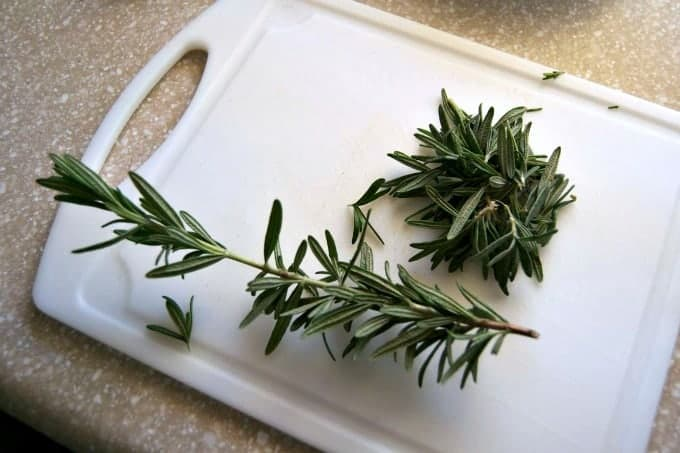Virtual Cook Book Club: December's Seasoning is Thyme!
- Elise

- Dec 1, 2021
- 4 min read
Updated: Dec 10, 2021
We've made our cook book club virtual! We may not be able to meet in person and cook for one another, but that doesn't mean we can't create together. Each month we will highlight a different spice or seasoning. Kits will include this spice, a recipe that highlights it, a little history on the spice or recipe, and some best practices. I'll post the recipes and information here as well, so let's get cooking! Oh, and we are changing some things. The kit has undergone an upgraded appearance. And be on the look out for some changes to the lineup as with the projected improvements to the pandemic status towards late Spring/early Summer will hopefully allow us to include some in-person meetings.
Interesting Facts on Thyme
Primarily adapted from MySpicer.com and OurHerbGarden.com

Acknowledged as one of the most widely used of all herbs (royal priests of Ancient Egypt used it in embalming, Ancient Danish and German people believed it to be the homes of fairies, etc.), thyme has a rich and varied history around the world. It has been in turn a cure-all for poisons, a pain reliever, a sign of courage, a farewell gift, a medicinal treatment for the Black Death... the list goes on.

History and folklore abound with references to the herb. There are even Biblical references, as the manger in which Mary is said to have given birth was said to have included thyme, woodroof, and groundsel. And if you are in any way an apiarist (you keep or encourage the presence of bees), it should be noted that Romans, in addition to believing that it was a cure-all for poisons, kept thyme primarily for its ability to attract bees.
There actually is a basis in fact for the belief that thyme might have medicinal value. Elements in its volatile oils (which gives thyme its unique scent) also have antiseptic qualities, more specifically the crystals which form when the oils are distilled. In addition, the whole plant has so much volatile oil that all parts of the plant exude the aroma we all know and love.
Today, thyme is still a much used herb. In addition to antiseptic properties and its unique aromatic traits, which go into herbal remedies, perfumes and soaps, thyme is one of the wider known and used herbs in cooking, especially when it comes to Italian, Mediterranean, Turkish, and Egyptian cuisine.
Best Practices for Cooking with Thyme
Primarily adapted from GordanLaddsKitchen.com

Thyme is an evergreen perennial herb. It belongs to the mint family and is closely related to oregano, hence its characteristic citrusy hint. Let this flavor profile primarily guide you on how to use thyme in your recipes.
Herbs with citrusy undertones tend to cut down overly fishy tastes, balance creams, and add freshness to oils and vinaigrettes. Gordan Ladd argues that there are few dishes that wouldn't do well with a little of the herb.
Thyme is a moderately structured herb with slim, needle-like leaves, only slightly fuller than rosemary in appearance, and commonly available in bunches or sprigs. A sprig is usually composed of a single woody stem with paired leaves or flower clusters. This means that its flavor wouldn’t be easily overpowered compared to a herb of a much lighter leafy structure such as parsley, but would not be recommended to solely go with more robust meats such as game for which a more woody herb would be a better option.

Using thyme in conjunction with other herbs, in this case, would work perfectly, though. Try pairing thyme with rosemary when roasting lamb or venison for example. If called for in a recipe, chances are you won't need to chop it.
Sprigs may also be used whole, stem included, if intended to be removed before serving or if to be left intentionally in the dish as a garnish.
As a final point, this herb’s relatively light structure makes it less resistant to heat in the cooking process and is an important consideration on using thyme. Let this remind you of adding it towards the end of cooking to make the most of its potent flavor and aroma.
Main Event:

Creamy Lemon Chicken with Thyme
As Adapted from SpendWithPennies.com for use by the Brown Deer Library Cook Book Club
Prep: 5 min. ● Cook: 25 min. ● Total: 45 min. ● Serves: 4
Ingredients
1 tablespoon olive oil
4 chicken breasts boneless skinless
1 teaspoon garlic minced
1 tablespoon lemon juice
1 teaspoon salt divided
½ teaspoon pepper
1 tablespoon butter
1 teaspoon all-purpose flour
1 ½ cups milk
½ teaspoon lemon zest
½ teaspoon dried thyme or 1 teaspoon fresh Thyme Leaves
Directions
Rub the chicken breasts with garlic, lemon juice, ½ teaspoon salt and pepper and set aside for 15-20 minutes.
Heat olive oil in a large skillet and add chicken breasts. Cook the breasts for 5-6 minutes on each side till cooked though and not pink from inside. Once cooked, take the chicken breasts out of the pan and set them aside on a plate. Cover the plate with foil to keep the breasts warm.
In the same pan heat butter and add the flour. Stir the flour for a minute and slowly start whisking in the milk till all the milk is incorporated and there are no lumps.
Simmer the sauce while stirring occasionally till the sauce thickens slightly. Add the remaining salt, lemon zest and thyme and mix. Add the chicken back to the pan and simmer for two more minutes. Serve immediately.









Comments